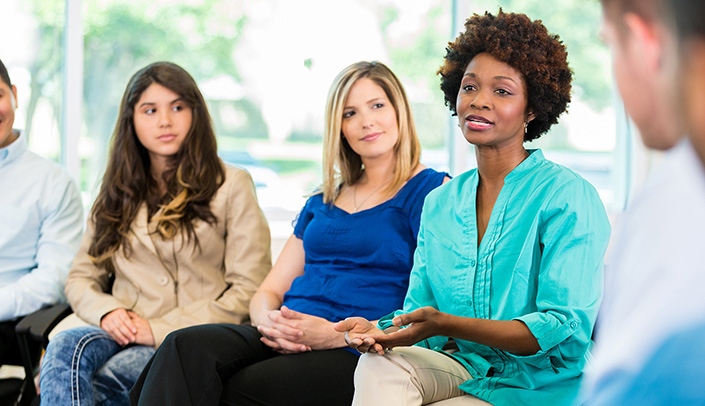During your next work meeting, look around. Does everyone look alike?
If the answer is yes, ask yourself: Does this represent the environment we want? If not, active and intentional steps are needed to create a more diverse community.
That was the video message from Sean Edmund Rogers, PhD, during the Nov. 11 "Conversations for Inclusive Excellence" session, in which Dr. Rogers shared how diversity of thought goes hand in hand with excellence — one of UNMC’s iTEACH values.
"If we don’t have broad ideas and perspectives at the table from the start it’s hard to be intentional about creating an end result that reflects the broadness we’d like," said Dr. Rogers, Spachman Professor of Human Resources and Labor Relations and an associate professor of management in the College of Business at the University of Rhode Island.
Affinity bias — a natural and unconscious tendency to prefer others who are like us — and homosocial reproduction — the tendency of individuals to select others socially like themselves — lead to homogeneity within organizations and often are cyclical in nature.
That’s why, he said, leaders must be intentional in creating communities with diverse perspectives and representation. Without it, "we might have blind spots we don’t even realize."
Watch the TEDxURI talk by Dr. Rogers.
Sheritta Strong, MD, assistant vice chancellor of inclusion, agreed. She shared a quote she’d recently heard: "Leaders lead at the level of their self-development limitations, despite their higher intentions."
"We must move from the ‘aspirational hope’ of creating diverse, inclusive environments toward ‘expecting’ them," Dr. Strong said. Doing that requires leaders, at all levels, to be:
- Intentional — Know the organization/program/unit goals up front and make decisions based on what’s important.
- Overt — Use actions and words that are observable.
- Conscious — Be aware of yourself and the world around.
View November’s DEI challenge, question, and discussion prompt.
